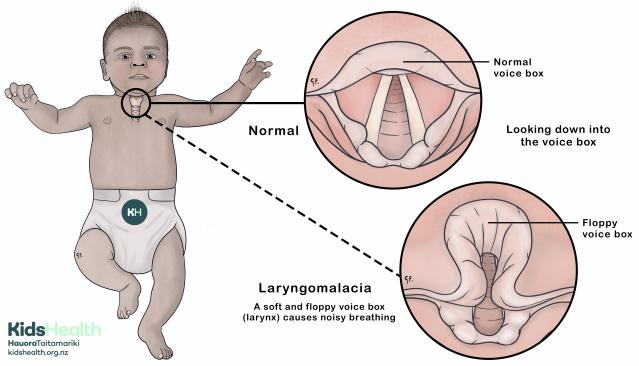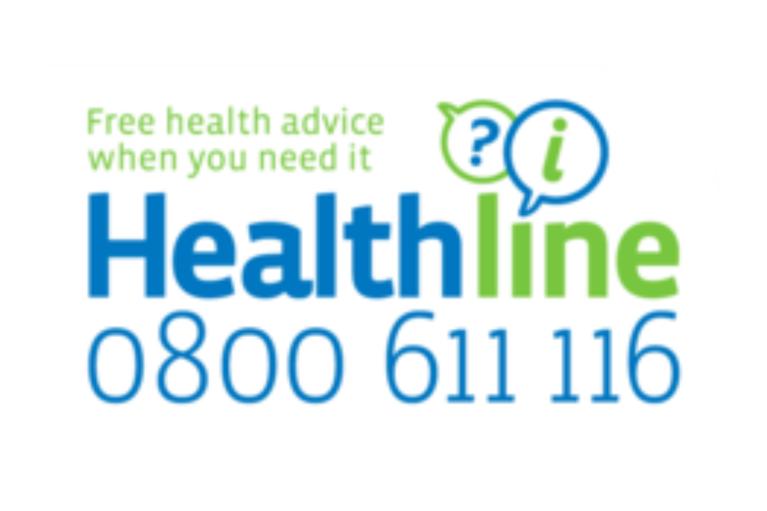Key points about laryngomalacia
- laryngomalacia is a common cause of noisy breathing in pēpi
- it happens because the voice box (larynx) is soft and floppy
- the noisy breathing is usually worse when your baby is lying down, feeding, or crying
- most pēpi grow out of it without treatment before they are 2 years old
What is laryngomalacia?
Laryngomalacia is a common cause of noisy breathing in pēpi. Laryngomalacia happens when the voice box (larynx) is soft and floppy. When your baby takes a breath in, the part of the voice box above the vocal cords narrows slightly. This partly blocks the airway for a moment.

Signs and symptoms of laryngomalacia
The main sign of laryngomalacia is noisy breathing, especially when your baby breathes in. This noise often sounds like a high-pitched squeak or stridor.
The noisy breathing may be more noticeable when your baby is:
- lying on their back
- feeding
- crying
- sleeping
Most pēpi with laryngomalacia do not have trouble breathing or feeding.
But, pēpi with severe laryngomalacia may have:
- pauses in breathing that are longer than 15 seconds (apneoa)
- difficulty feeding or swallowing
- poor weight gain
- episodes of bluish skin colour (cyanosis)
Causes of laryngomalacia
The exact cause of laryngomalacia is not known. It may be related to how the voice box forms before a baby is born.
Gastro-oesophageal reflux may also play a role in laryngomalacia. Pēpi with laryngomalacia often have gastro-oesophageal reflux. This is where food and acid go back up the food pipe (oesophagus). If stomach acid reaches the voice box, it may make laryngomalacia symptoms worse.
Who gets laryngomalacia
Laryngomalacia is common in newborn pēpi. More than half of pēpi show symptoms within the first week of life. It is the most frequent cause of stridor in pēpi.
Diagnosing laryngomalacia
A health professional can usually make a diagnosis of laryngomalacia after talking to you about your child's symptoms and by examining them.
Managing laryngomalacia
For most pēpi, laryngomalacia is mild and gets better without treatment. This usually happens before they turn 2 years old.
A health professional may prescribe medicine to help with reflux symptoms if your baby also has reflux.
In severe cases, when pēpi with laryngomalacia aren’t feeding well or growing, they may need surgery.
Could it be something else?
Pēpi with airway infections can have noisy breathing. Some pēpi with infections like croup can have stridor.
When to get medical help for your baby
Call Healthline on 0800 611 116 or see a health professional if your baby has:
- noisy breathing that is getting worse
- difficulty feeding
- pauses in their breathing
Dial 111 and ask for urgent medical help if your baby:
- is blue around the mouth
- is struggling to breathe
- is hard to wake
- is floppy
- is drooling
Signs That Children Are Struggling To Breathe
Healthline is available 24 hours a day, 7 days a week on 0800 611 116. Call Healthline if you need advice about a child of any age who is unwell, hurt, or has any symptoms of sickness. It's free to callers throughout New Zealand, including from a mobile phone.

